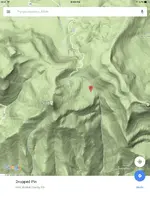Here's an article about one of the owners of the Denver Post and how the Post used yellow journalism. This is probably why the Post hired Josiah M. Ward, even after he was involved in a blackmail scheme when working for the Examiner.
https://en.wikipedia.org/wiki/Frederick_Gilmer_Bonfils
Maynard Adams Citadel Mountain books followed and seemed to be based on the Denver Post articles by Josiah M. Ward, almost to the point where you could read Ward's articles and not even have to read Adams books. With Ward's history at the Examiner and the yellow journalism of the period when Ward wrote the Treasure Mountain articles, I wonder if the whole thing was a scam from the beginning.
https://en.wikipedia.org/wiki/Frederick_Gilmer_Bonfils
Maynard Adams Citadel Mountain books followed and seemed to be based on the Denver Post articles by Josiah M. Ward, almost to the point where you could read Ward's articles and not even have to read Adams books. With Ward's history at the Examiner and the yellow journalism of the period when Ward wrote the Treasure Mountain articles, I wonder if the whole thing was a scam from the beginning.




 ?
?